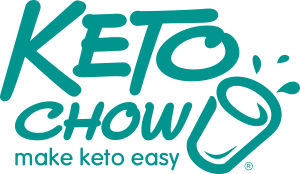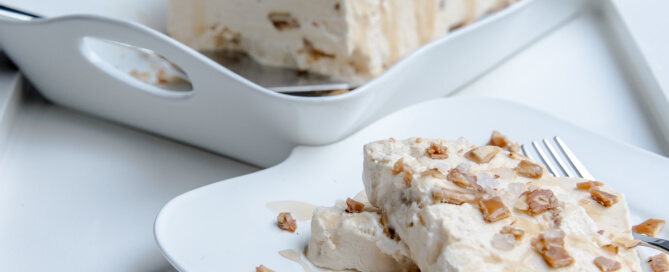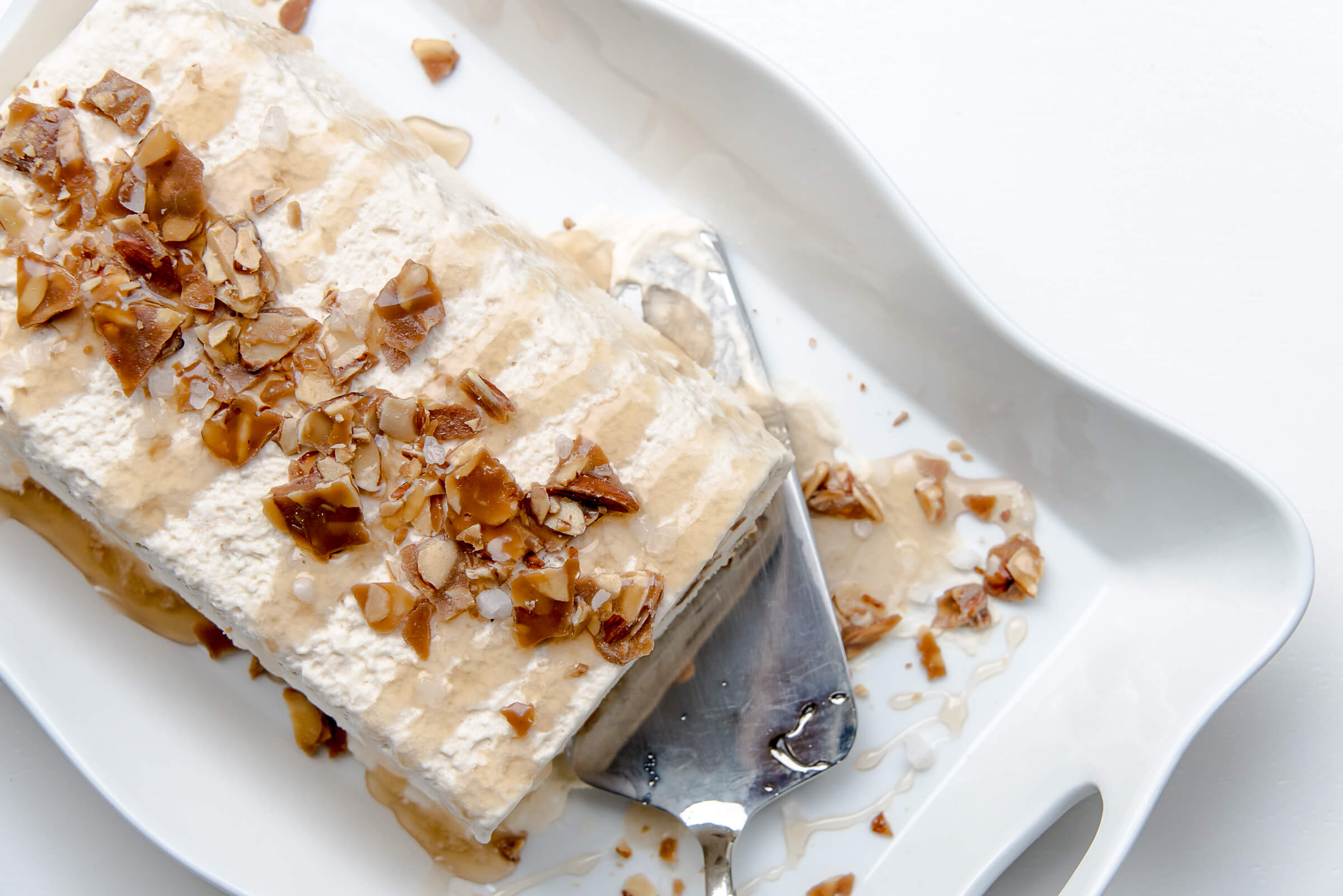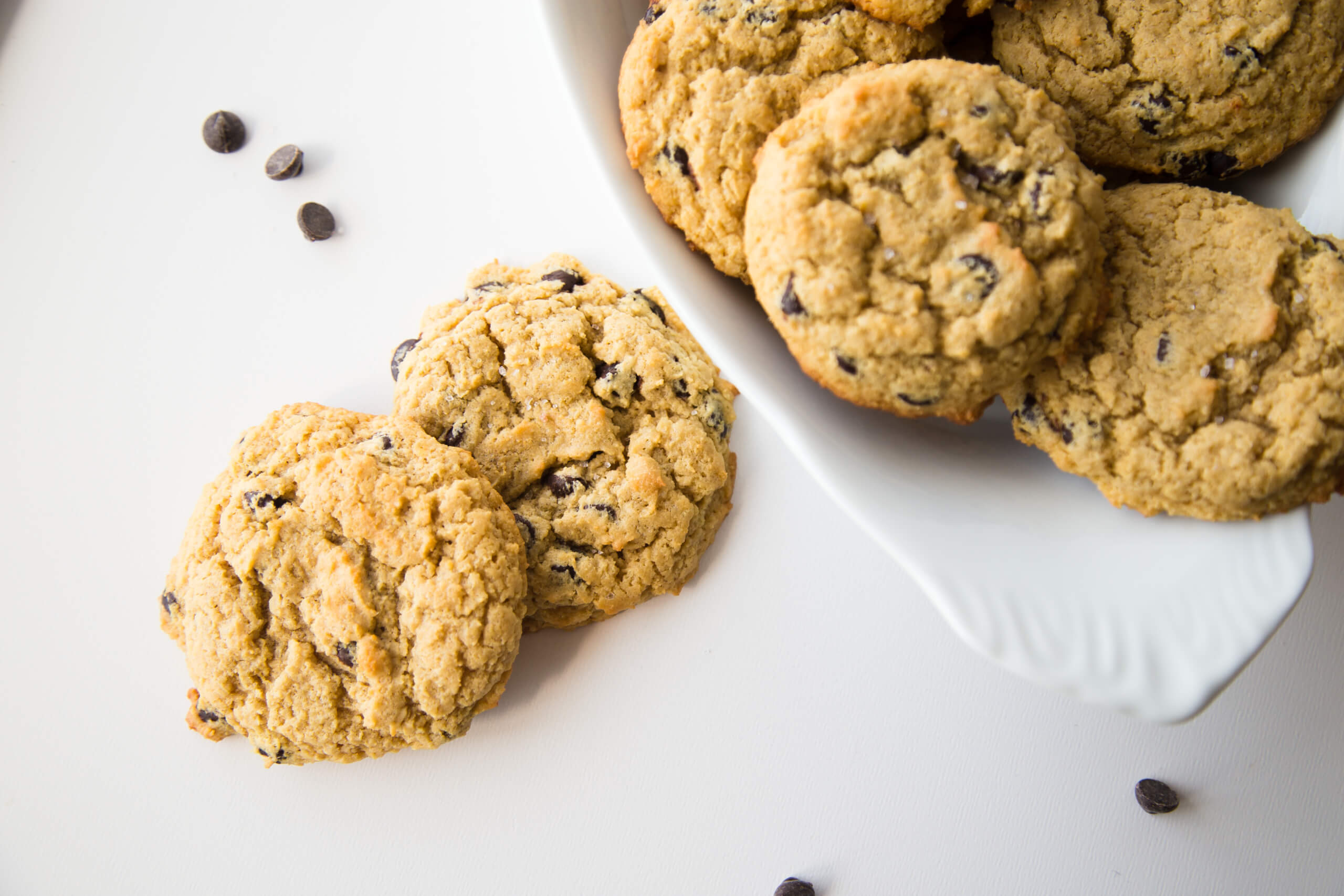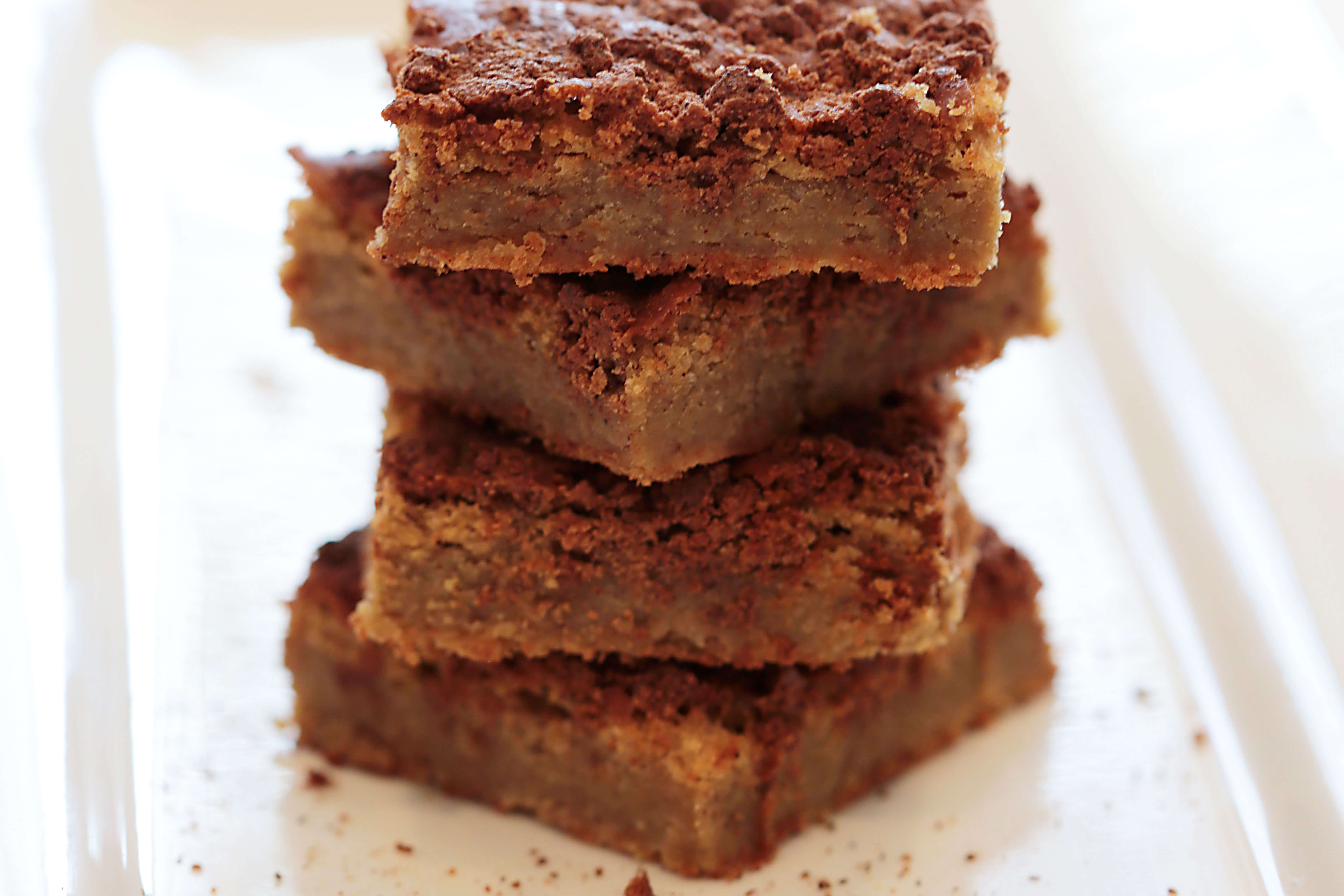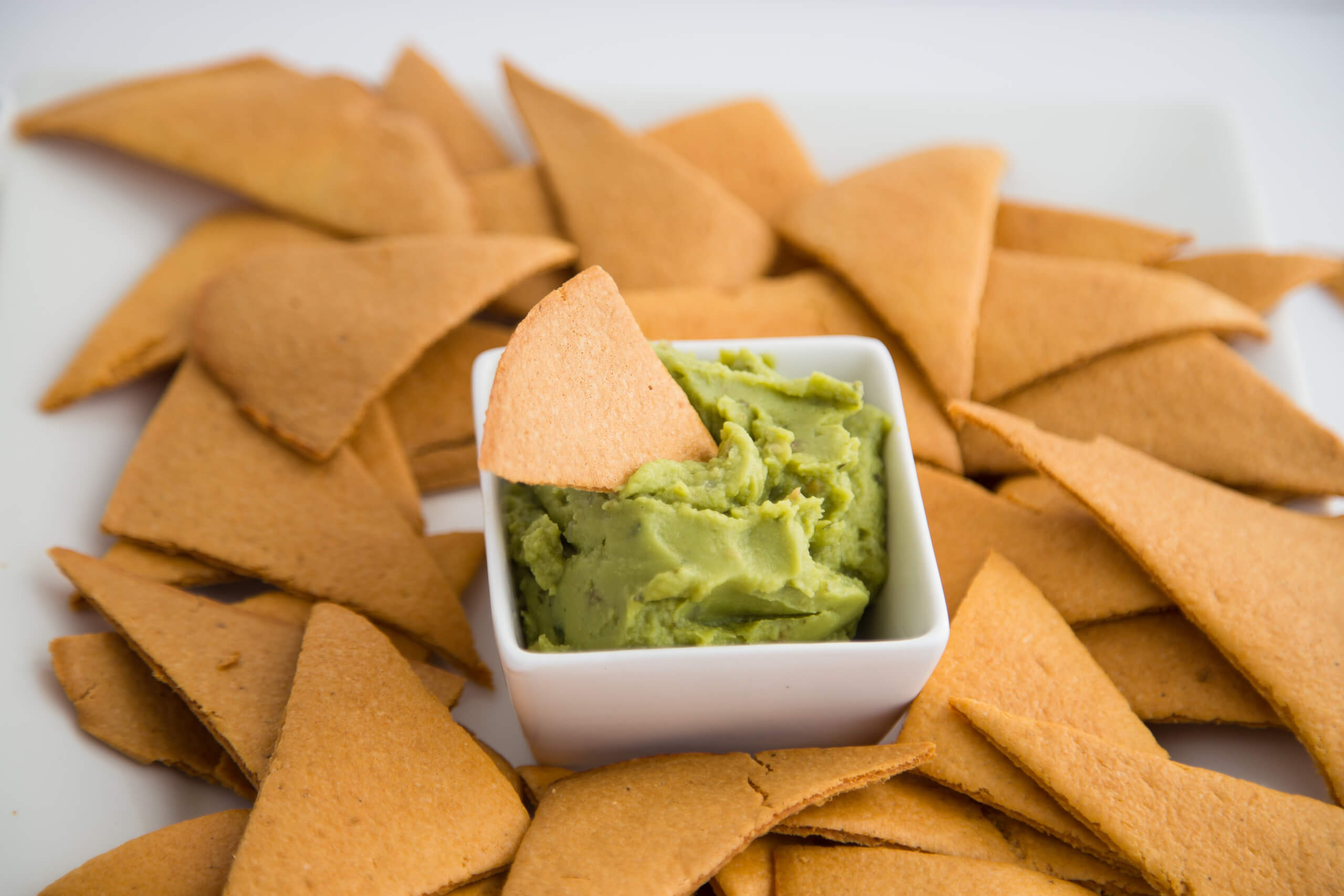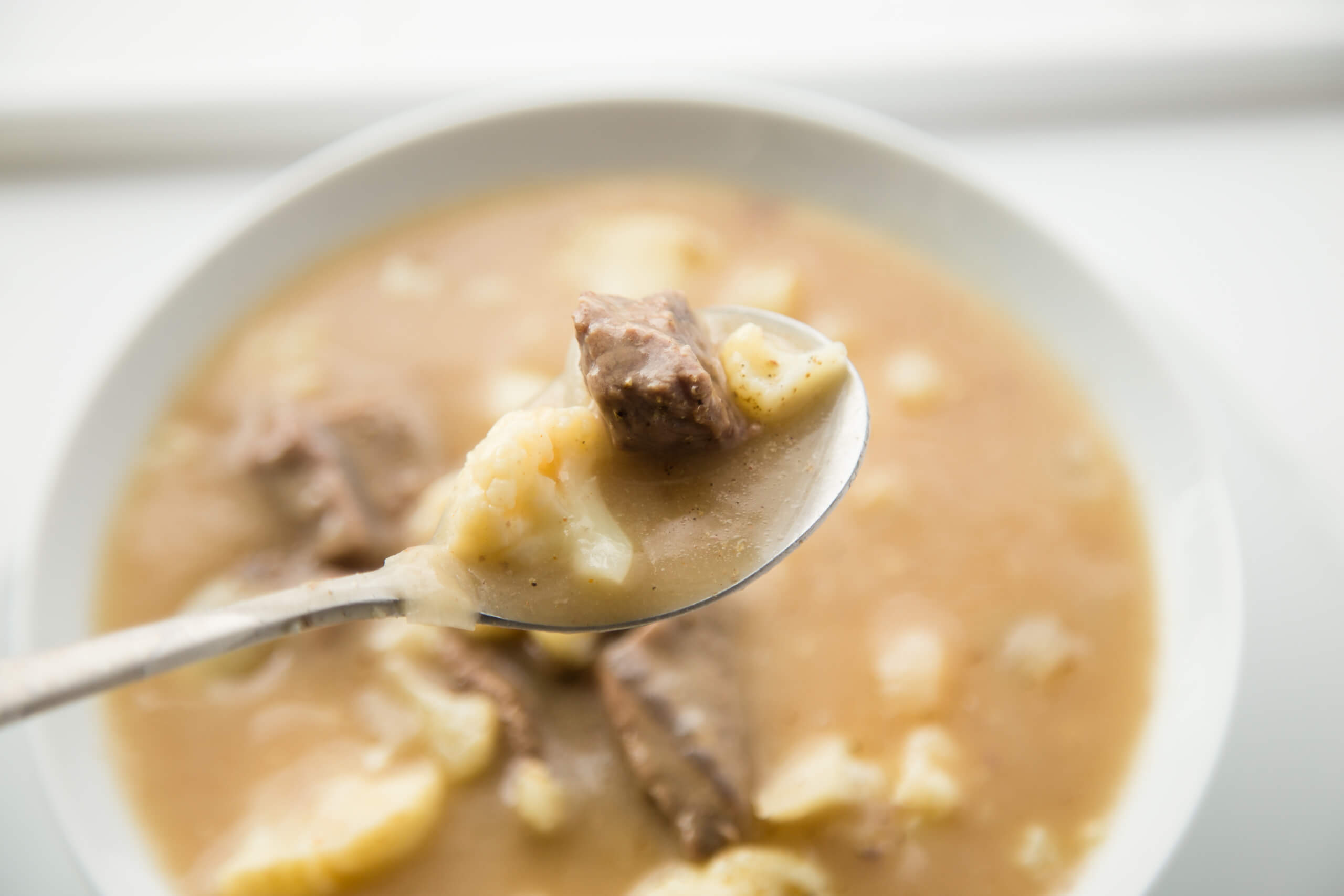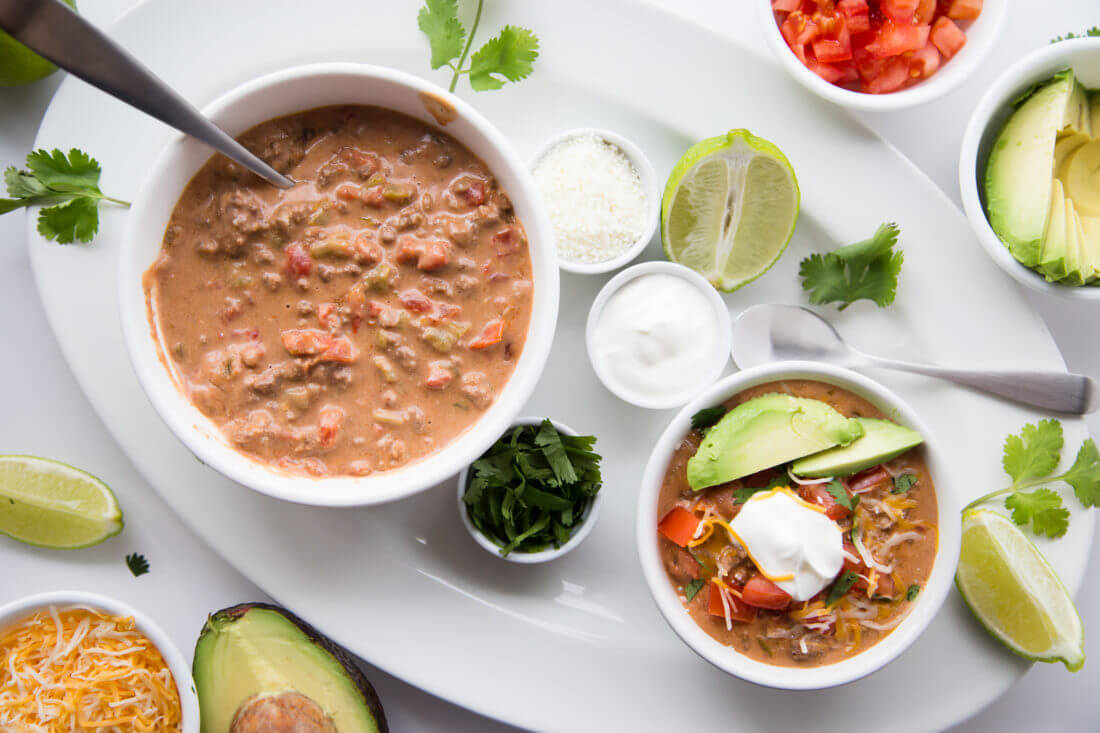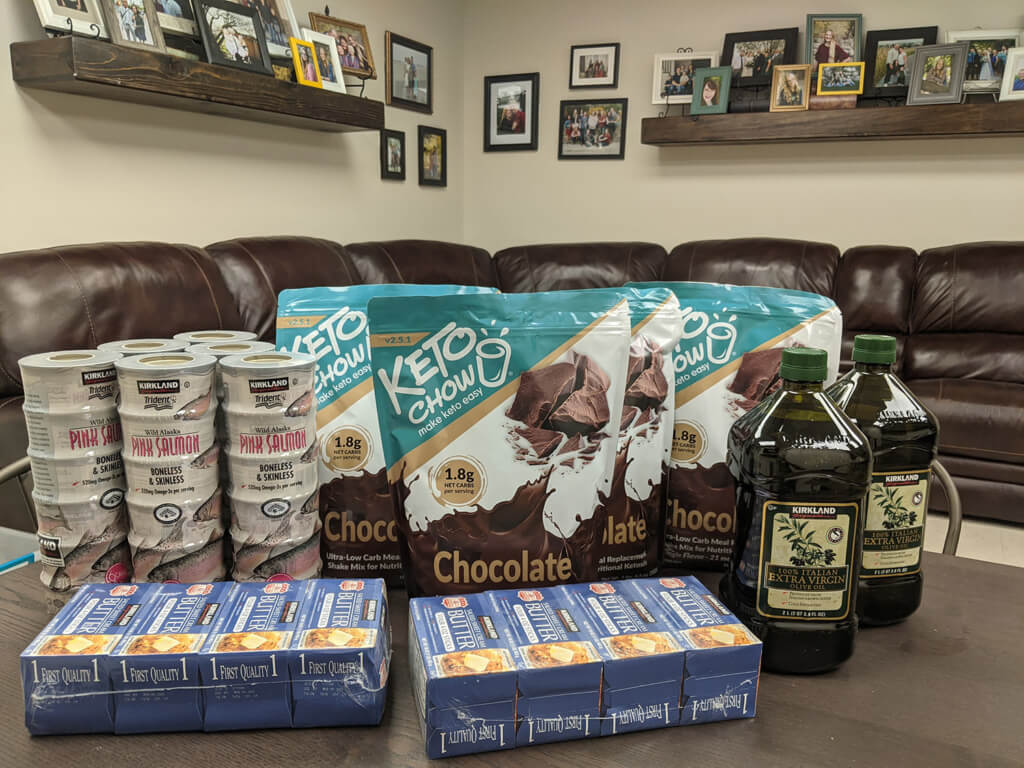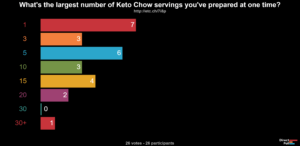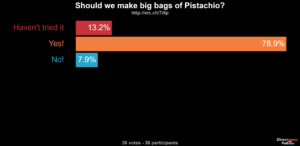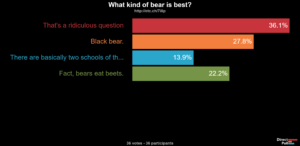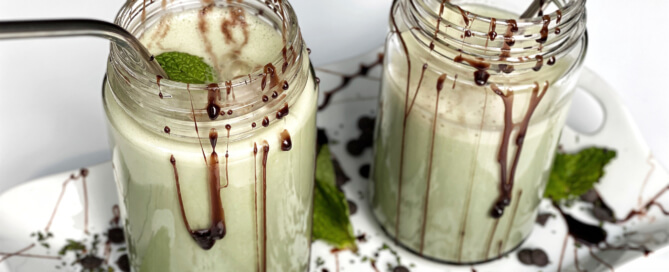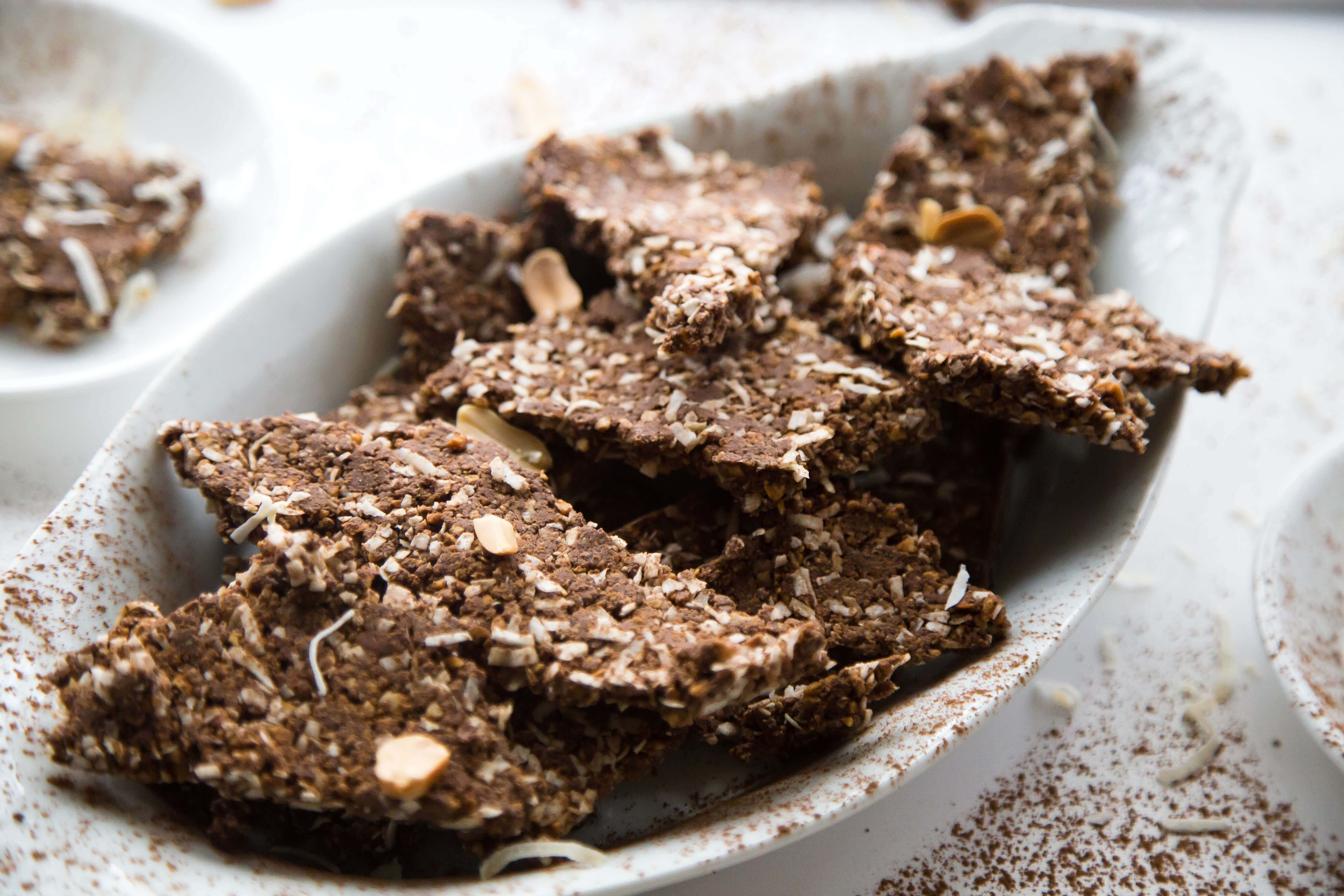5 Practical Tips for Starting Keto
My previous article walked you through a few things to know before starting a keto diet. But knowing what to do and actually doing it aren’t the same things. So now that you know the basics—what keto is, how it works, and what to focus on—here are some tips for getting started and setting yourself up for success.
As I mentioned last time, keto really isn’t that big a deal. It’s only as complicated, difficult, and expensive as you make it for yourself. The single most important thing is keeping your carbohydrate intake very low. If you have the financial means to consume solely organic produce and grass-fed or pasture-raised animal foods, that’s a great way to go. But if you’re on a tight budget and your go-to grocery shopping strategy is to get whatever’s on sale at your local supermarket or discount chain, you’ll do just fine. Keto isn’t about the provenance of your food; it’s about keeping carbs low.
But like I also said last time, even though keto is just regular ol’ food minus the sugar and starch, for many people, this is a pretty radical change. No more cereal or toast for breakfast, no more mid-afternoon latte and muffin. No more pasta dinners, no more post-workout fruit smoothies. Whether going keto will be just a mild shift from what you’re eating now, or it will be a massive overhaul of your entire diet, here’s some advice to make it easier, more convenient, and more delicious! After all, if a diet—keto or any other way of eating—is difficult, complicated, and forces you to eat things you don’t like, you’re not going to stick with it for long. So here’s to making keto simple and fun.
Give Your Kitchen a Makeover
A key factor in keto success is surrounding yourself with suitable foods, and only suitable foods. This is easy if you live alone, but more difficult if you live with family or housemates who aren’t jumping aboard the keto train with you. Let’s look at the former scenario first and tackle the latter one in a bit.
Clear out your kitchen! If you’re ready to start keto and you want to start now, get rid of everything that’s not appropriate for a ketogenic diet. Purge your pantry, cupboards, fridge, and freezer of all high-carb items. Don’t wait until you finish them all up. Ditch them now. If you’re starting keto to lose weight or improve a serious health issue, those foods aren’t doing you any favors, so why would you want to finish them? Toss ‘em! (Consider taking all sealed and non-perishable items to a local food bank or shelter.)
Depending on the style of keto you’re going for—there are lots of different ways to do it—get familiar with the foods that will become staples of your diet, and go stock up! The details will vary, but the core foods you can count on to work for any iteration of keto include fatty meats (beef, lamb, pork, poultry, bison, game meats), seafood, eggs, nuts and seeds, and non-starchy vegetables. High-fat dairy products, like cheese, butter, cream, and sour cream, are fine if you tolerate dairy.
Stock up when things are on sale. On a keto diet, your freezer is your friend. Fill the freezer with fatty meats—steaks, sausages, ground meats, pork chops, bacon, roasts, chicken thighs or drumsticks—whatever you like. Also, keep a few fatty protein options in the fridge. Having all that nice meat on hand doesn’t do you do any good if it’s frozen solid. Remember to always have a couple of options defrosted and ready to go. When the meat is defrosted, cooking may only take a few minutes depending on the cut.
Do the same with frozen vegetables. If you have space in your freezer, stock up on the ones you like. Broccoli florets, brussels sprouts, chopped spinach, blends of peppers, and mushrooms. Most supermarkets even have frozen riced cauliflower and spiralized zucchini noodles for convenient keto cooking. (When buying frozen veggies, make sure they’re plain and unseasoned, or watch out for the carb grams per serving if they do have sauce or seasoning.)
Eggs on sale? Keto jackpot! Buy several dozen. Use your own discretion, but the “expiration” or “sell by” date on an egg carton is really just a general guide. Properly refrigerated, eggs last a very long time, and they’re a gold mine of perfect fat, protein, and micronutrients for keto.
Prep Your Environment
Keto will be easier to stick to if you prepare large quantities of food ahead of time so there’s always something ready to go. Vegetables are great to have on hand, but what if you get home from work and you’re tired and hungry? You don’t want to start from scratch with peeling and chopping things when you’re exhausted after a long day. (Suddenly that pizza delivery menu will start looking really good…)
Whether you’re cooking for a crowd or just for one, never cook only enough for one meal. In most cases, it doesn’t take any longer to cook a large amount of food than it does a small one. If you’ve got the grill going anyway, don’t bother cooking just one or two steaks or chicken breasts. Grill five or six at a time—or more. You can have one for dinner and have another, cold, sliced into strips and dipped in blue cheese or ranch dressing for lunch the next day. Or use it as the protein on top of an entrée salad for dinner. Make steak & eggs later in the week for breakfast, or use pre-cooked steak and chicken in fajitas for dinner one night.
If you live in an apartment or some other arrangement where grilling isn’t feasible, use your oven in the same way. Invest in a large glass baking tray or rimmed metal baking sheet. Bake or roast eight or ten chicken legs or pork chops at a time. Most of it’s hands-off time, so while those are cooking, you can wash, peel, and chop vegetables for the week.
You can roast or steam a massive pile of broccoli or cauliflower all at once. Use it throughout the week with different seasonings each time. Using different herbs, spices, and even cooking fats, can make the same ingredients taste like an entirely new dish. Dice a mountain of onions, zucchini, and/or bell peppers. Sautee them with salt and pepper for a bit and store them in a container in the fridge. Since they’re already cooked, they’re an almost-instant side dish for any meat, or you can use them in an omelet. Just reheat and add whatever seasonings you like—curry powder, Italian seasoning, Tex-Mex, sesame ginger. The possibilities are endless, and it’s all entirely customizable to your own taste preferences.
Take advantage of the kitchen appliances and gadgets that make cooking quick and easy. Slow cookers, pressure cookers, and air fryers are good for making large pieces of meat that you can enjoy over the course of several days. (Keto pro-tip, for those who don’t want to cook every day: embrace leftovers!) Slow cookers and pressure cookers can help in the budget department, too: cuts of meat that are tough tend to be priced lower than tender, premium cuts, but when cooked using one of these tools, they end up melt-in-your-mouth soft.
Hard-boiled eggs are a common grab & go keto snack. If you’re boiling the water anyway, why bother with just a few eggs? Boil one or two dozen. You’ll thank yourself all week when hunger hits and all you have to do is open the fridge and snag one. The same goes for sausage links and bacon. Learn to enjoy certain foods cold. Cooking bacon? Don’t mess around with two or three strips. Cook the whole package; cold bacon is a dynamite keto snack. (Bake in the oven rather than frying on the stovetop for easier cleanup.) Sausage links are another ideal keto grab & go option. Fry or bake a few packages at once and fatty protein will always be handy.
What about non-perishables? This is easy since they require no preparation and no refrigeration. Keep a supply of keto-friendly foods to use as meals or snacks: canned seafood (tuna, salmon, sardines, mackerel), pork rinds, low- or zero-sugar beef jerky or meat sticks, nuts and seeds, cheese crisps, pepperoni, and salami. (These might call for refrigeration after they’re open.)
The name of the game here is, be prepared. Keto recipes abound online, and there are some incredibly creative and enticing keto cookbooks out there. Your cooking can be as intricate as you’d like. You can prepare a five-course gourmet meal every night if that’s your thing, but if keeping things simple will make it easier for you to stick to keto for the long term, all you really need to do is base your meals around a fatty protein and round out with low-carb vegetables if you choose to.
Doing Keto Alone in a Houseful of People
Getting rid of all high-carb foods is easy if you live alone. But what if you live with family or housemates, and you’re the only one doing keto? This definitely makes it harder. Your storage space will be limited if your fridge, freezer, and cupboards need to accommodate your keto-friendly foods in addition to the sugary and starchy fare the rest of your household prefers. One strategy is to have a designated cabinet, drawer, or pantry shelf that’s for you and only you. Keeping your keto goodies separate from other food might help limit your exposure to things that are off-limits.
Navigating the fridge will be more difficult. You can’t completely blind yourself from seeing others’ high-carb foods and beverages. You might just have to shore up your mental reserves and stay strong. Remind yourself often of the reasons why you’re doing keto. It’s pretty rare that anyone eats this way just for fun, so chances are you’re looking to lose a significant amount of weight or make a dent in a health problem. Whatever you’re trying to accomplish, are those foods going to help you get there, or will they only set you back?
Don’t assume it’s going to be difficult, though. Sure, you’ll be avoiding many of the foods you might have consumed daily for most of your life, but the good news is, for many people, sugar cravings disappear pretty quickly once they get carbs out of their diet. It doesn’t happen magically overnight for everyone, but many people are pleasantly surprised when they experience for themselves how much they don’t long for high-carb foods. There might, indeed, be times when you have to white knuckle it, but tell yourself that sugar cravings aren’t life-or-death emergencies. They’re not pleasant, but no actual physical harm will come to you if you power through and don’t give in to them. Remember: feeding the sugar beast doesn’t make it go away. It makes it hungrier for more. (A good way to satisfy a sweet craving, though, is to keep a Keto Chow shake in the fridge, and rather than drinking it all at once for a meal, take a swig once in a while to quench the sweet demon.)
Ketogenic diets are so good at regulating appetite that beyond weight loss and beyond better blood sugar control and other improvements in health, for some people, the best thing about keto is that—for the first time in their lives—they’re not hungry all the time. Not thinking about food constantly. Not planning lunch in the middle of breakfast, and not fantasizing about dinner before lunch is done. Intrusive thoughts of food no longer plague them 24/7. They’re freed from the shackles that kept them tethered to sugar all day. I can’t promise this will happen for you, but consider the possibility that sticking with keto will be easier than you think it will be.
As for cooking, don’t make this more complicated than it is. Family meals don’t need to change much. If you’re the “head chef” in your household, don’t become a short-order cook, making customized meals for everyone at the table. Household members who are doing keto can have fatty protein and vegetables; the others can have the same meal plus a starch or a sugary dessert. Don’t reinvent the wheel. It’s just food.
Have “The Talk” With Your Family
The physical logistics of making room for keto-friendly foods in a shared kitchen are easy compared to navigating the mental and emotional aspects of being a lone keto dieter in a home shared with carb eaters. If you have a spouse, significant other, and/or children in your home who won’t be joining you in eating keto, it’s a good idea to set some boundaries.
Ideally, your loved ones will be supportive of you implementing a lifestyle change to improve your health. They don’t have to eat the same foods you do, but they should respect you enough to understand that you have reasons for changing your diet, and they can be positive and encouraging around you.
That’s the ideal scenario, though. More likely, there’ll be someone or perhaps multiple people in your life who will feel threatened by the changes they’ll see in you and they’ll end up sabotaging you, intentionally or unintentionally. Sabotage may come in the form of “food pushing” – “Oh, you can have just this one taste,” or, “Aren’t you going to have any dessert? I made this just for you!” It can even present as passive aggression—eating your favorite high-carb foods right in front of you, on purpose.
Food triggers powerful feelings in people. Sometimes this is because those around you who are not making changes may feel like you’re judging them (even if you don’t give a hoot about what anyone else eats), and significant others may be worried that if your physique or health changes substantially, they might not be “good enough” for you anymore. These feelings have nothing to do with you and everything to do with the person expressing them. Their fears. Their insecurity. They don’t genuinely want to sabotage you; they’re just scared. They might not even be able to recognize that this is what’s going on, but you know, and now you can navigate those relationships with tact and grace.
People get awfully worked up when people close to them make changes in their life. A new job, a new diet: anything that threatens to change the status quo and alter relationship dynamics can make people uncomfortable. It’s simply human nature and none of us is immune. Spouses and significant others can feel especially threatened when their partner makes a major change—especially one that might result in significant weight loss.
If people close to you express negativity about you doing keto, consider having a polite and calm conversation about this. Let them know you understand their perspective but make it clear that you’re making these changes because you want to live a better life. If obesity or a major health issue is compromising your quality of life, then improving these things can only make you a better spouse, parent, friend, sibling, or coworker. Having a frank and honest discussion about how your health or your weight is affecting you—physically and mentally or emotionally—and sharing openly with them can provide them an opportunity to do the same. Perhaps they know their own life is limited because of similar issues but they were afraid to be honest about it. Opening the conversation can help both of you.
In other situations, it’s best to keep your mouth closed. The quickest way to turn others off to this way of eating is to proselytize about it. Don’t be “that person”—the one who can’t eat anything without commenting about how many carbs it does or doesn’t have. You don’t want people judging you or commenting on your low-carb food selections, so give them the same respect with regard to the foods they eat.
If someone expresses curiosity or specifically asks you for information, then sure, point them in the direction of some good resources. But whether it’s about diet or pretty much any other topic, one thing most people don’t like is unsolicited advice. So don’t give any. Even when you feel moved to. Even when you think keto could really help someone in your family or circle of friends. The best way to get someone interested in keto is to serve as a silent example of the incredible things this diet is capable of doing. Let your results speak for themselves and you won’t have to convince anyone to try it. They’ll come around on their own.
Be Prepared for it to be Difficult – or Not!
I explained a little about the “keto flu” in my previous article. Keto flu is the nickname for the unpleasant things some people experience as their body transitions from being fueled mostly by carbohydrates to being fueled mostly by fat. I said “some people” experience it, because despite the alarming warnings in keto circles, most people don’t go through a rocky adjustment period. Most people sail through and feel great pretty quickly on keto, but you do need to be aware of what to expect in case you’re someone who has a few hiccups.
If you ditch the carbs and have more energy, clearer thinking, and a well-controlled appetite right from the start, great. But be prepared with plenty of salt and magnesium supplements if you have headaches, muscle cramps, or feel dizzy or lightheaded. (If you’re taking medication for diabetes or high blood pressure, work with a doctor who’s on board with you trying keto, because your medications might need adjusting very quickly after starting keto. Some of what you think is keto flu might be effects of being overmedicated.)
So What Are You Waiting For? Get Started!
Now you have no more excuses. You know what to be aware of before starting keto, and you have practical tips to jump in and do it. So get going. You can radically transform your health, and all you have to do is eat delicious food! That’s right: just regular food. What you don’t need to start keto is MCT oil, bone broth and collagen powders, ketone pills, gadgets, apps, and meters. It’s fine if you want to play around with all that later on, but when you’re just starting out, use your money where it will serve you best: on your food.

